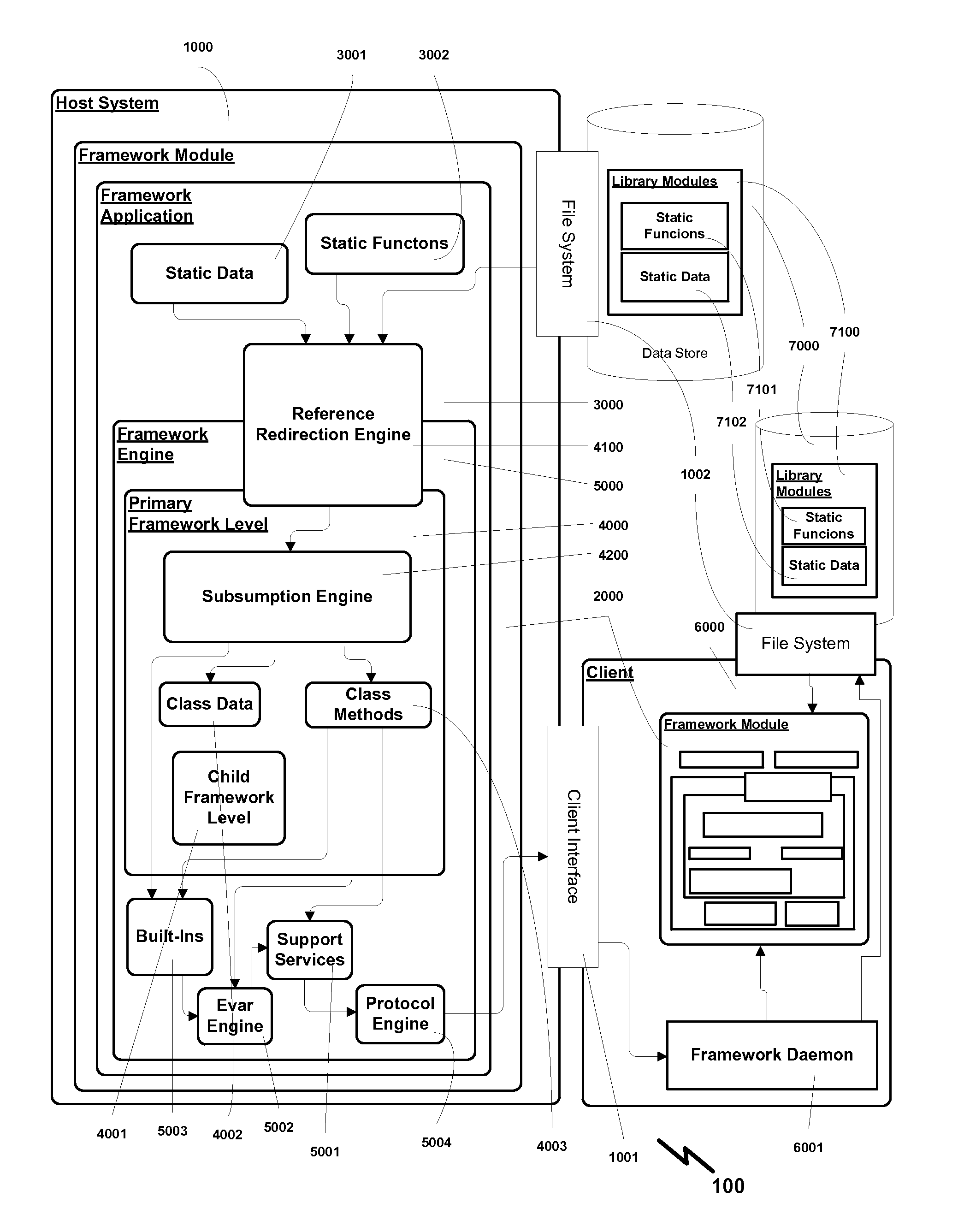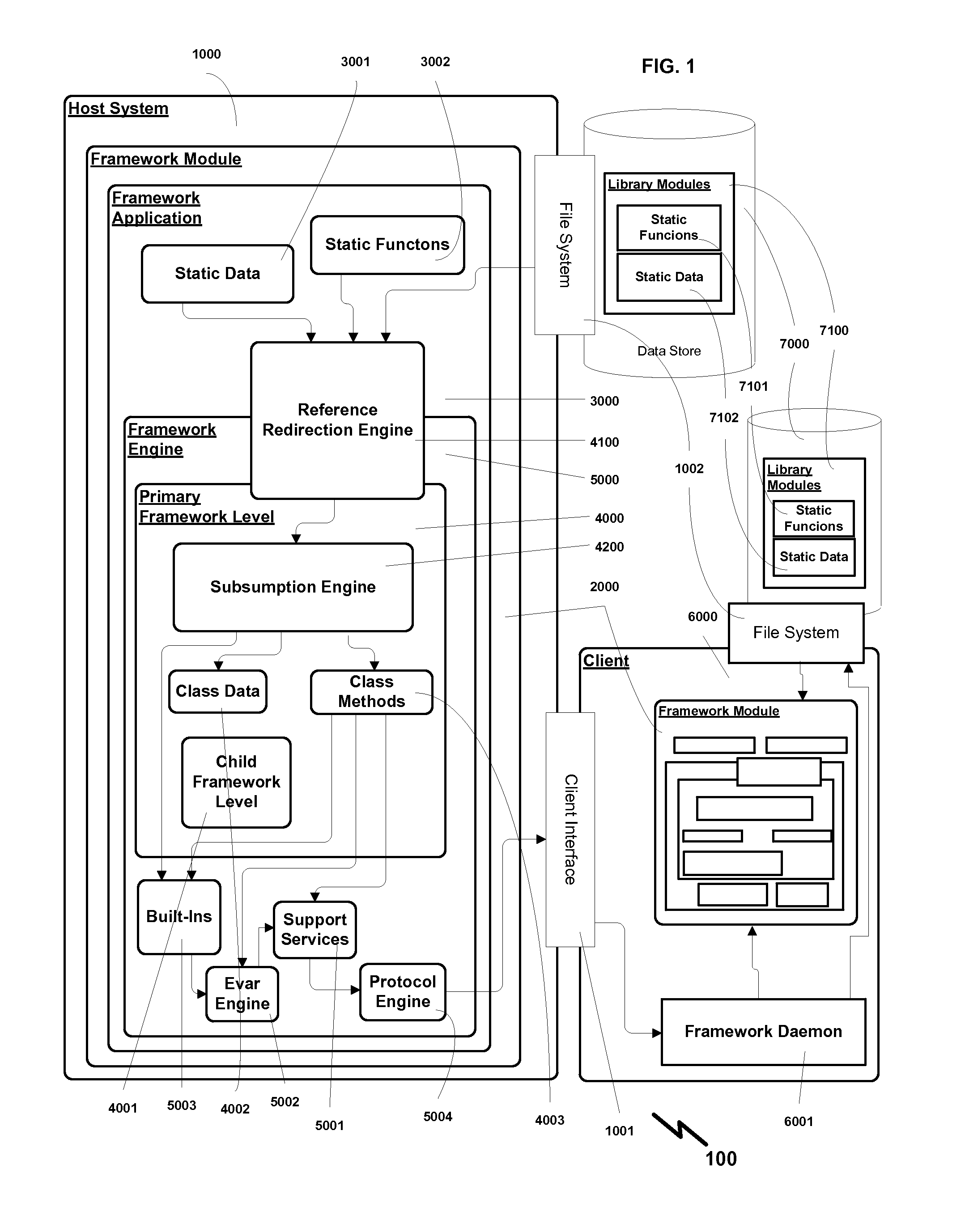Methods and systems for automation framework extensibility
a technology of automation frameworks and extensibility, applied in the direction of error detection/correction, program loading/initiation, instruments, etc., can solve the problems of increasing the complexity of the software used to configure, control and test these products, and increasing the complexity of the product. to achieve the effect of facilitating import and organizing this functionality
- Summary
- Abstract
- Description
- Claims
- Application Information
AI Technical Summary
Benefits of technology
Problems solved by technology
Method used
Image
Examples
Embodiment Construction
[0027]FIG. 1 illustrates a system 100 for providing an extensible automation framework in accordance with an embodiment of the present invention.
[0028]System 100 includes a host system 1000 and zero or more client processes 6000 connected to the host system 1000 through an application specific client interface 1001 which in one embodiment of the current invention is a local area network and a serial interface. Host system 1000 includes one or more framework modules 2000 which includes one or more framework applications 3000, zero or more static data 3001, zero or more static functions 3002 and zero or more framework engines 5000.
[0029]System 100 also include zero more module library modules 7100 which, in one embodiment of the current invention, are accessible through the local file system 1002 and imported into the framework engine 5000. Library modules 7100 include subsumable software entities including zero or more static data 7102 and zero or more static functions 7101. In one e...
PUM
 Login to View More
Login to View More Abstract
Description
Claims
Application Information
 Login to View More
Login to View More - R&D
- Intellectual Property
- Life Sciences
- Materials
- Tech Scout
- Unparalleled Data Quality
- Higher Quality Content
- 60% Fewer Hallucinations
Browse by: Latest US Patents, China's latest patents, Technical Efficacy Thesaurus, Application Domain, Technology Topic, Popular Technical Reports.
© 2025 PatSnap. All rights reserved.Legal|Privacy policy|Modern Slavery Act Transparency Statement|Sitemap|About US| Contact US: help@patsnap.com



